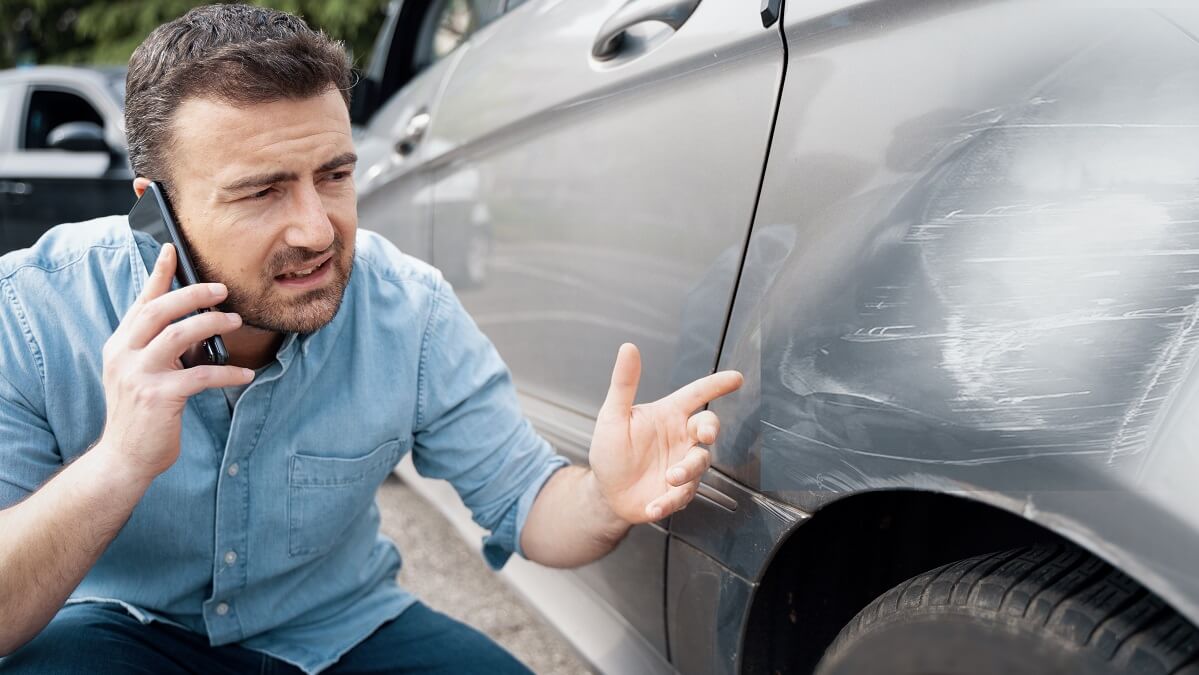Many of us remember the days of hefty bumper bars and even, on some cars, protective overriders. Modern cars seem to crumple from even the most delicate of bumps, and they can be hideously expensive to repair.
The good news is that such dings are easily avoidable just by slowing down and knowing the length and width of your car.
Figures show repair costs have risen sharply in the past five years, so even a minor indiscretion can end up costing you dearly.
Neil Worth, chief executive of UK motoring organisation GEM, says the best solution is extra care when parking.
“The cost of repairs to bumpers, doors and other bodywork or replacement parts has risen significantly, thanks to rising spare part costs and the requirement for expensive re-calibrations of car safety sensors,” he says.
“Slow speed manoeuvring and ‘hit-while-parked’ incidents remain among the most common collision types reported by drivers. Although the repair costs are relatively modest compared with other, more serious knocks, there’s inevitably a negative effect on insurance policies as well as the nuisance and down-time of needing a repair.”
He warns that if you’re tempted to keep putting off the repair, then your car’s resale value is likely to plummet.
But there are ways to minimise the risk of damage and injury by taking things slowly and having a parking plan. That involves a few checks before you move, making best use of any parking aids and doing everything slowly.
If necessary, don’t be too proud to ask for an extra pair of eyes on your car as you’re moving. After all, if it prevents a bump in the car park, then the cash stays in your pocket.
Smart parking tips
Carry out a check of all your mirrors every time you get in your vehicle.
Familiarise yourself with your car’s length, height and width. Some car parks may have narrower parking spaces or lower ceilings than you’re used to.
Don’t rush. Plan your journey to allow time for parking, then make sure you choose somewhere suitable and safe.
Check around for low bollards and high kerbs that can disappear from sight as you park.
If you have parking aids, cameras and warning buzzers fitted, make sure you understand them and can make good use of them.
Make a plan when you’re ready to drive away from the space. How close are you to other vehicles? Walls? Kerbs? How tight will your turn need to be? Don’t be embarrassed to ask a passenger to be an extra pair of eyes to see you in and out safely.
Doi you believe you have a good sense of the dimensions of your vehicle? Do you know people who don’t? Share your thoughts in the comments section below.
Also read: Is premium fuel worth the extra cost?
Paul Murrell is a motoring writer and creator of seniordriveraus.com, which specialises in “car advice for people whose age and IQ are both over 50”. This article originally appeared on seniordriveraus.com and is republished with permission.


Part of the reason for the increase in the price of parts to repair vehicles is due to the fact that all vehicles are now imported. As a consequence parts have to be shipped large distances, and body panels being bulky are a lot more expensive than the to ship. This is just another consequence of not having a local motor vehicle manufacturing industry. As time goes by these parts will become expensive and difficult to find. This is because overseas northern hemisphere vehicles are turned over a lot quicker than in Australia, so parts are discontinued far earlier than than was the case with local manufacturers
When I park I try to have one side as close as possible to the wall, so there is heaps of room between myself & the next car, however that still doesn’t work. My front door got dinged, so obviously the car next to me started to turn before they had backed out!